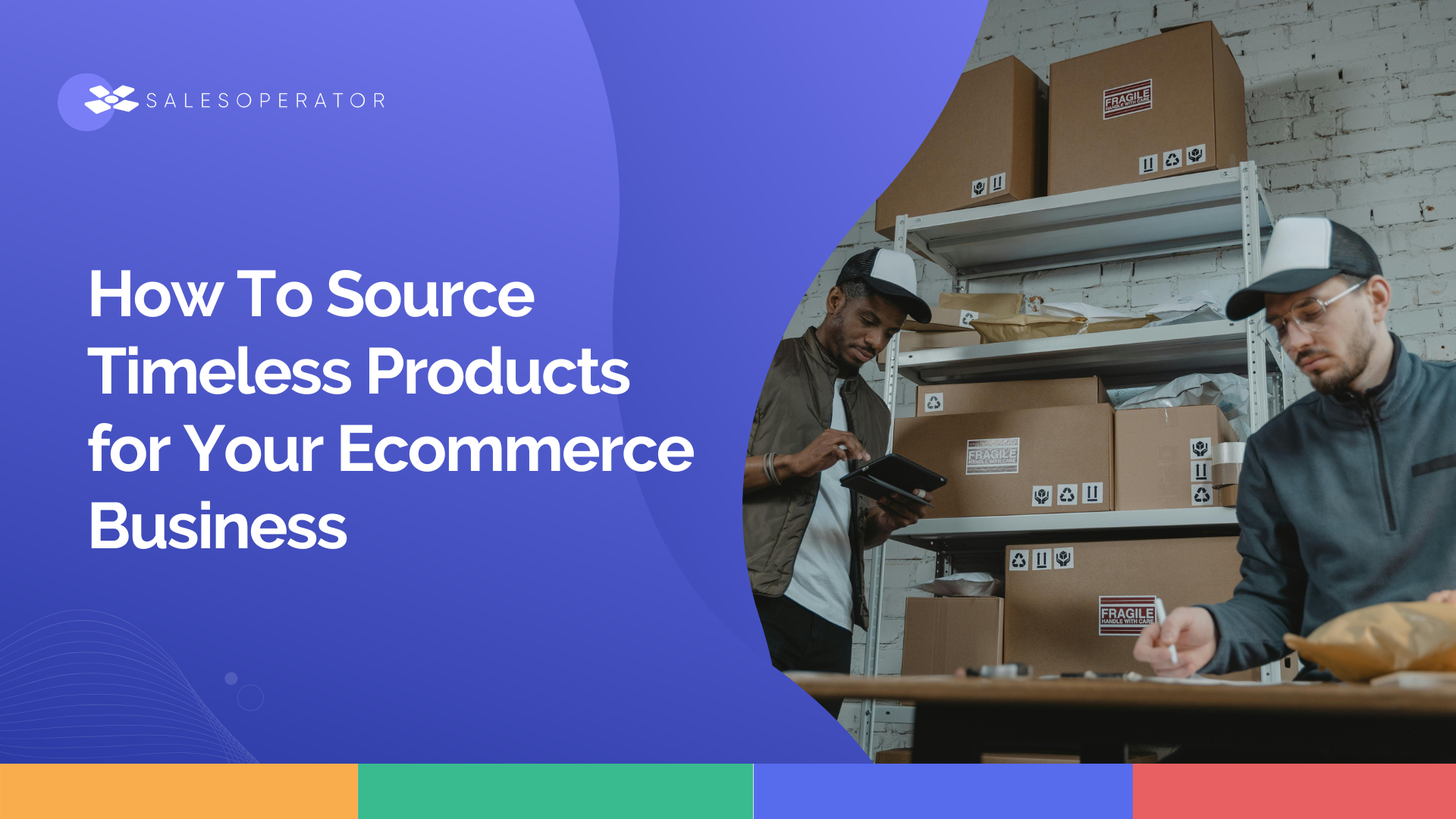Learn how to source timeless products that stay in demand year after year—no trends, just smart choices to build a reliable, long-lasting ecommerce business that keeps selling.
So, you’re diving into ecommerce. That’s exciting.
But let’s be honest—picking the right product? That’s where most people get stuck.
You’ve probably seen trends come and go. One day it’s fidget spinners. The next, it’s posture correctors or viral water bottles.
But if you’re building something to last, you need more than a fad.
You need timeless products.
Products that don’t get old. Products people want all year round. Products that solve basic needs or fit into everyday life.
That’s what we’re talking about today.
And I’m not just going to tell you what to sell—but how to find the right stuff and where to get it from.
First—what makes a product timeless?
Think about the things you use over and over again. Not because they’re trending, but because they’re useful.
A good backpack.
A great kitchen knife.
A clean notebook.
A skincare essential you restock without thinking.
These products don’t need hype. They just quietly sell, over and over again.
So when you’re choosing your product, think long-term. Will people still want this next year? In 5 years?
That’s your test.
You’re not just picking a product. You’re picking a business partner.
Sounds intense, right?
But that’s exactly what a product becomes. It represents you. Your brand. Your values.
Let’s say you choose reusable glass containers.
They’re practical. Environmentally friendly. Affordable. And used in almost every household.
Boom—you’ve got a solid start.
Now, imagine trying to market them. You can show meal prep, eco-conscious tips, organizing hacks. The content writes itself.
That’s the power of a good product—it gives you a story.
Now comes the real question: Where do you find these products?
You’ve got two main options—local and global sourcing.
If you want faster shipping or to support nearby industries, start local.
But if you’re serious about margins and global reach, international sourcing is your playground.
Let’s break that down.
Global sourcing—yes, it’s doable. Even for small sellers.
You don’t need a massive warehouse or an import-export license to get started.
Platforms like Alibaba, Global Sources, and Made-in-China make it easy to connect with manufacturers.
And we’re not just talking about bulk.
Many of these suppliers now offer low MOQs (minimum order quantities) or dropshipping options.
Let’s say you want to sell insulated stainless steel bottles.
You can search for “insulated water bottle” on Alibaba. Sort by verified suppliers. Request samples. Compare prices. Negotiate terms.
Suddenly, you’re in business.
But here’s where most people go wrong—they only look at price.
Yes, margins matter.
But if the quality sucks or the supplier goes silent after your first order, it’ll cost you way more in refunds and lost trust.
So don’t rush.
Ask for samples.
Test the product yourself. Use it like your customers would.
If it’s a backpack, fill it up, tug on the zippers, get it wet.
If it’s a kitchen tool, try cooking with it.
Make sure it holds up.
Because your reputation depends on it.
Let me give you a few examples of timeless product types you could explore:
Think organizational tools—like modular drawer sets, desktop organizers, or cable management sleeves.
These are boring… but they sell all year. Everyone loves a tidy space.
Or look at personal care—face razors, hairbrushes, massage tools.
Again, not glamorous. But useful. Repeat purchases. High trust factor.
You could also explore simple fitness items—resistance bands, yoga blocks, jump ropes.
They’re light, easy to ship, and appeal to a broad audience.
And don’t forget about pets. Pet grooming gloves. Collapsible bowls. Slow-feeder mats.
Pet owners spend with emotion—and they spend consistently.
Pick a niche. Then pick a product that fits your long-term vision.
Still with me? Good. Because now comes the sourcing mindset.
Global doesn’t mean unreliable. But it does mean you need to be smart.
Here’s a trick: build relationships with two suppliers, not one.
Order small batches from both. Track delivery times. Compare packaging. Note how they handle mistakes.
That way, if one drops the ball, you’ve got a backup.
Also, look for suppliers that understand your market.
If you’re targeting U.S. customers, a factory that already exports to the U.S. will understand the safety standards, packaging needs, and timelines better.
And what about shipping and logistics?
You’ve got choices here.
You can import and store inventory locally (good for speed).
Or you can go with a fulfillment center or use dropshipping to avoid upfront inventory.
No one way is perfect. But as you grow, you’ll want more control over quality and packaging.
So plan for that shift from day one.
Let’s talk branding for a sec.
You can take a timeless product—and make it yours.
A simple hairbrush becomes “The Only Brush You’ll Ever Need.”
A lunchbox turns into “Your Daily Meal-Prep Sidekick.”
If your supplier offers white-labeling or private labeling, go for it.
That way, you’re not just selling a product—you’re building a brand.
And brands are what last.
Here’s the deal: You don’t need to reinvent the wheel.
You just need to find products that solve everyday problems—and source them from the right people.
Start with simple, durable, in-demand items.
Test quality.
Negotiate smart.
Build supplier relationships.
And always—always—think long-term.
Because trends might get attention.
But timeless gets results.
Final Thought
If you’ve been stuck wondering what to sell, or scared of making the wrong choice—take a breath.
Your ecommerce journey doesn’t need to start with something flashy.
It just needs to start with something that works.
And if you can deliver that consistently?
You’re already ahead of the game. If you still have something in your mind, read everything about product sourcing here.




